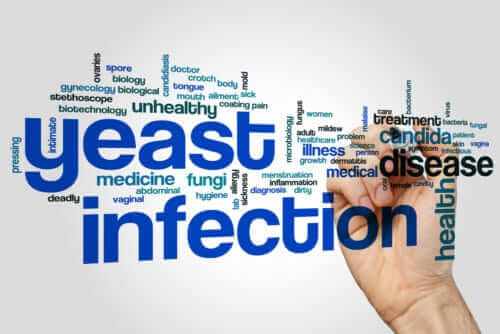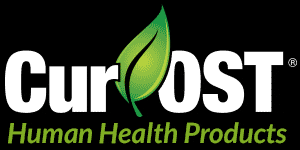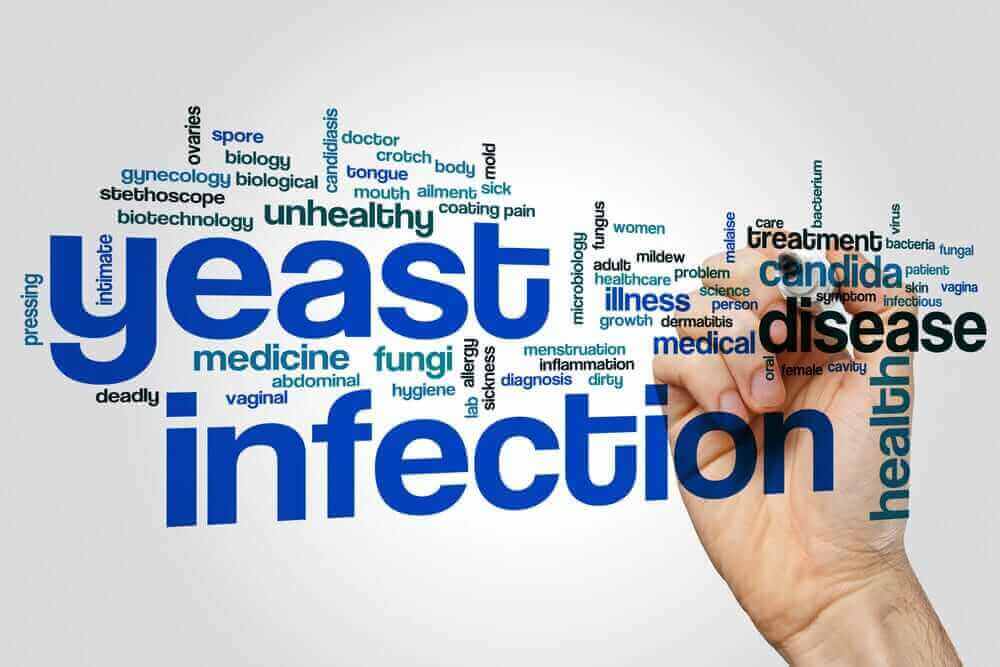Itching, burning, and discharge often at the most inconvenient times. Vaginal yeast infections are something that every woman has encountered at least once and generally after the first encounter, you likely don’t want to go there again. Yeast infections are extremely common in women and despite current therapy options, the problems continue to reoccur, often put off until another day. Are you just pacifying the current situation or are you solving the problem at a base level? To answer this, you need to look at the situation, raising the question if there might just be a better means of intervening. One possibly that could positively impact not just vaginal health but overall health.

Vaginal yeast infections can impact a woman no matter her age or lifestyle. The most common clinical signs include itching, burning, odor, and often a vaginal discharge which can be sporadic at times. The most common organism cultured from vaginal yeast infection is Candida albicans, which is normally present as a part of the normal vaginal microbiome, but in these cases has been allowed to overgrow, increase in numbers, and thus create clinical problems.
Why Do Vaginal Yeast Infections Occur?
Vaginal yeast infections are a result of a change in the microbiome within the vagina. These changes can then result in altered microbial and yeast levels, increasing ‘bad’ bacteria and other organisms, while reducing ‘healthy’ ones. This creates an imbalance, contributes to overall poor health of the genital region, and can lead to inflammation. The discharge that is produced is a result of the localized immune response attempting to restore balance. If you were to look at the discharge under a microscope, you would like see specific white blood cells, yeast organisms, and various bacteria.
The vaginal environment can change on a dime, to put it bluntly, and is not too dissimilar from the gastrointestinal microbiome. Factors involved with a changing vaginal environment include:
- Stress (physical/mental)
- Diet (processed foods, high fat diet, high sugar intake)
- Clothing (reduced air circulation)
- Hormones (menstrual cycle)
- Vaginal cleaning products
- Gastrointestinal health and microbiome balance
- Chronic inflammatory health issues
- Medications (antibiotics)
- Sexual Habits
In medicine, we encounter many yeast infections localized to different areas of the body. In some, the infection is localized to the genital region, in both males and females, while in others it may be on the skin, eyes, oral cavity, or even the ears. The yeast organisms are seen as ‘opportunistic’ in some cases, which really to an extent they are. What does this mean?
Our skin, ears, gastrointestinal tract, oral cavity, and yes, even our genital regions normally have certain yeast organisms as part of the normal microbiome. They help to create balance and overall health to those regions, aiding in maintaining pH, and even aiding in digestion and balancing of the other levels of microorganisms. They are a part of the normal environment, but in certain situations, when the environment changes, the more harmful organisms prosper for lack of a better word. The control restraints are taken off and they are allowed to grow in an environment that now fosters their growth.
Looking at the Big Picture with Vaginal Health
In the case of vaginal yeast infections, the environment has changed and is now allowing the yeast organisms to increase in numbers. In many cases, it is not just the yeast that are increasing, but often other bacterial organisms. This can create a hostile environment and creates the clinical signs that likely you are too familiar with!
When you step back and look at the big picture, you begin to see that many parts of your body contain their own distinct microbiome, which is the normal healthy population of bacteria, yeast, and even protozoa. In this article, we are discussing the vaginal microbiome, but specific microbiomes exist for your ears, eyes, skin, digestive tract, urinary tract, and likely even your armpits. These microbiomes provide health to those specific regions, when in proper balance, and the organisms types and quantities will vary from one section of your body to the next. Each having its own distinct purpose in health.
The interesting thing is that at the root of almost all microbiomes is the digestive tract. In fact, digestion is closely associated with almost every health condition that you can imagine from diabetes to joint health and even cancer. Somewhere in that spectrum is vaginal health. The reason being is that the balance of the gastrointestinal microbiome dictates total body pH, immune health, and inflammation status. Digestive health is also tied back to digestion and nutrient absorption, which then impacts cellular health, immune health, tissue repair, and even impacts inflammation.
Digestion and the gastrointestinal microbiome is often at the root of everything! In the list above, regarding factors that influence vaginal health, you have to realize that every one of those factors also influences gastrointestinal health. As you become more stressed, cortisol release influences digestive health and alters the microbiome in that area, while also impacting vaginal health. A diet rich in fats and processed foods with high sugar content also influences the digestive and likewise the vaginal microbiome. Medications, specifically antibiotics, directly impact the digestive microbiome, which then secondarily impacts the vaginal microbiome. Antibiotics are important as they can negatively impact healthy bacteria in both the gastrointestinal tract and other areas of the body. They are important to aid the body in eliminating an infection, but long term, they can have dire consequences on overall health by impacting normal microbiomes throughout the body. Reduce healthy bacteria and the tides shift, allowing more harmful bugs and yeast to take over.
Managing Vaginal Yeast Infections
Now that you can better understand the problem, let’s run through some options for potentially better therapy and management. Current traditional options for management of vaginal yeast infections include:
- Eat yogurt for impact of probiotics
- Anti-fungal medications
The question is how well do these options work?
Yogurt supplementation can be useful when used as a part of an entire regimen for overall health. Like any other probiotic, you must keep in mind that the environment in which you are supplementing must be favorable for bacteria survival. Just because you take a probiotic, such as Lactobacillus, this does not mean it will solve all of your problems. Your success rate is dramatically improved if the environment is balanced, which will foster growth of those healthy organisms. A continued diet high in fat, high in processed sugars or foods, and a very stressful lifestyle will not create a proper environment.
Antifungal medications can prove helpful, especially if the situation is dire. In reality, the goal with these medications is not to rid the vaginal area of yeast, but more so to ‘knock’ the levels down, reducing the current yeast load. The hope is that as you reduce the yeast load, the environment then changes and allows for more balance, thus not fostering further overgrowth of these organisms. You don’t want to get rid of them, honestly, as they are part of the normal flora and if they are completely gone, then you likely would shift things in the opposite direction.
If you are continuing to deal with one vaginal yeast infection after another, despite these therapies, then there is room for change, which may just benefit you in more way than one.
Options for Better Long Term Vaginal Health
If you want to resolve the ongoing saga of one infection after another, then optimally you restore overall health, in mind and body. When you do this, the options that you put into play impact every facet of health.
There are many options, but most begin with making an impact on gastrointestinal health:
- Diet modification (eating more greens, fruits, vegetables and steering clear of processed foods and refined sugars)
- Stress reduction and better management
- Exercise
- Inflammation management
- Gastrointestinal support
The next time you encounter a yeast infection, take a moment to step back and look at your situation. Likely, you are also battling other problems or a high level of stress. In many cases, you may even notice that you have not been eating great, or recently have consumed some high fat meals. Maybe you have also been dealing with some digestive issues, such as gas, cramping or even constipation. These are all connected.
All of these factors feed into one another, meaning that when you reduce stress or better manage it, you also likewise improve gastrointestinal health. When you eat better, you don’t just impact your immune response, metabolism, and energy, but the foods you eat fuel proper bacteria growth in the digestive tract and other areas. Through eating the right foods, you can change the microbiome in your digestive tract, which then directly impacts inflammation and overall body pH, which can then impact other areas of your body, including the vagina.
The diet is one of the most crucial areas of health, but often the most problematic for many. The consumption of more fruits and vegetables, not to mention other whole foods, is a tremendous source of nutrients, phytochemicals, and potent natural prebiotics that fuel bacterial balance. Making the choice to eat better is one thing, doing it is another. There are many options set before you to assist you in this task. No one is perfect, but the goal is to make changes that create positive results. If you can’t physically consume fruits and vegetables at every meal, then supplement them through a ‘green’ shake with proven nutritional power. One option is the Cur-OST HU Multi-Enhance, which is a powerful tool in providing the body the benefits of real fruits, vegetables, packed full of nutrition and prebiotic potential.
Promoting a healthy inflammatory response through the body is also paramount for overall health and can impact many facets of your body, not just aching joints or a bad back. Inflammation is often directly linked back to digestive imbalance, which is then connected with vaginal health. You can promote a healthier inflammatory response through your dietary choices by reducing saturated or processed fats, refined sugars, and overall chemical laden foods. Using supplements which target the inflammatory response are also helpful for a variety of reasons. Two helpful options include Cur-OST HU Pure or Cur-OST HU Ultimate, when taken on a daily basis.
Gastrointestinal health is another critical area, which can be managed via dietary choices but can also be improved by supplementation. Reduction of stress and increasing exercise can also directly impact your gastrointestinal health, as can other factors. One supplement that can routinely be taken and has been relied upon for centuries are the ingredients found in Cur-OST HU Tri-Gut. The 3 ingredient found within that formula are commonly known as Triphala, which has been relied upon as a digestive supplement for years. Triphala has been heavily researched and not only appears to aid in balancing the intestinal microbiome, but can benefit other microbiomes throughout the body. It has mild antibiotic properties, reducing harmful bacterial numbers, while also provides prebiotic properties and boosts healthy bacterial counts. The ingredients in HU Tri-Gut also provide potent antioxidant properties and promote a healthy inflammation response in the body.
Health is a Choice and a Narrow Road
Over the past 20 years in research, the impact of the digestive microbiome has become well known in many facets of health. In today’s world, we tend to view isolated problems as being that, isolated problems, when in reality they are connected to something else. In most of those cases, there is a direct link back to digestive health and with that…diet and stress.
We all have a choice in this life and those choices are not always easy. Even when you commit yourself, the road or path is very narrow and sometimes restricting. Others easily influence our behaviors and choices, making things even more difficult. When it comes to vaginal health, there are many options for true health, and that often begins with correct dietary choices. Just keep in mind that poor vaginal health is often an indicator of a bigger health problem that maybe just hasn’t manifested itself yet.
You can create change and over time, reap those benefits on a mind and body level!


